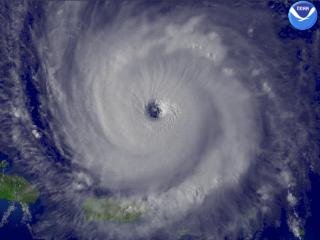The 2004 hurricane season is one which the residents of Florida
won't soon forget. Not only did Hurricane Frances, the storm
I'm going to focus on, devastate the state, Hurricanes Charley,
Ivan and Jeanne also produced significant damage. Frances
reached a peak intensity of 145 mph briefly over the central
Atlantic, making it a dangerous Category 4 on the Saffir-Simpson
scale. Luckily, Frances weakened somewhat back to Category 2
status with 105 mph maximum sustained winds, as it made landfall
along the east coast of Florida during the early morning hours of September 5 near Port Saint Lucie.

 .
.